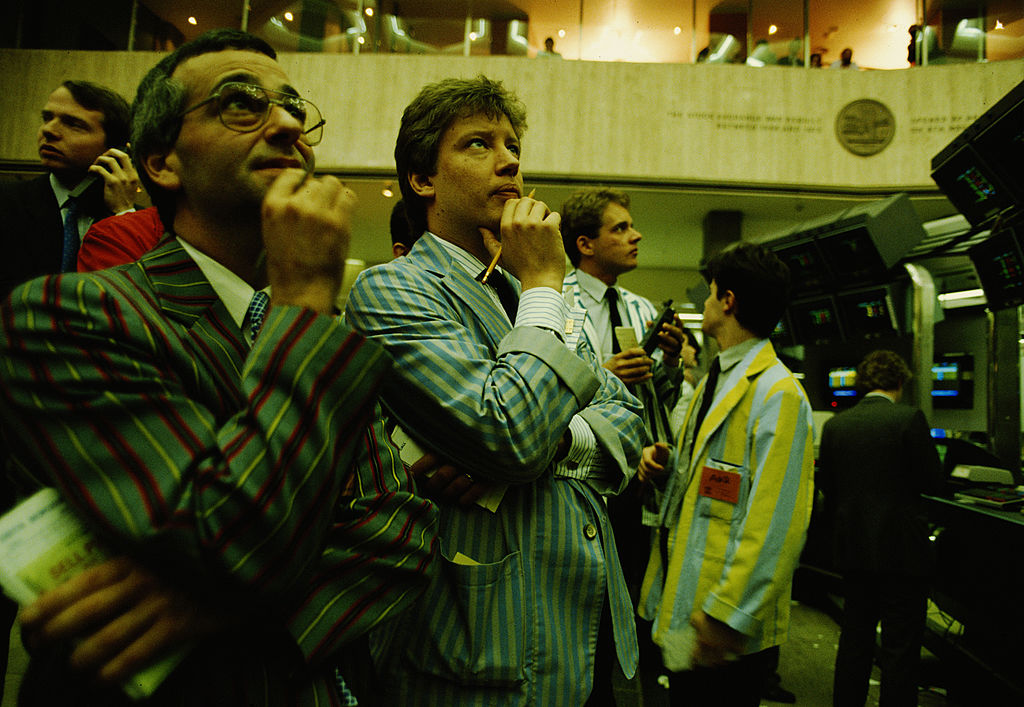Can new management turn RIT Capital around?
After several years of poor performance, there is growing evidence that RIT has turned the corner, says Max King

Five years ago, Jacob Rothschild stepped back from direct involvement in RIT Capital Partners (LSE: RCP), the £4 billion trust effectively controlled by his family. Straightaway, its performance lagged without his magic touch.
On at least one occasion, RIT seemed to have turned the corner, only to fall back again. The shares retreated from trading at a premium to net asset value (NAV) to a discount of more than 30%.
However, performance has now picked up under new chief executive Maggie Fanari, who joined in March 2024. Last year, the investment return was 9%, while the first quarter of 2025 was up by 3%.
MoneyWeek
Subscribe to MoneyWeek today and get your first six magazine issues absolutely FREE

Sign up to Money Morning
Don't miss the latest investment and personal finances news, market analysis, plus money-saving tips with our free twice-daily newsletter
Don't miss the latest investment and personal finances news, market analysis, plus money-saving tips with our free twice-daily newsletter
The principal driver of 2024’s performance was a 16% return from quoted equities, which comprise 46% of the portfolio. Meanwhile, private equity turned the corner after two difficult years, says Fanari, with a return of 5% from a 33% allocation. And uncorrelated strategies – principally absolute return funds and credit, which account for 24% of the portfolio, returned 4.5%.
RIT looks for exceptional companies
The trust’s allocation to quoted equities and private equity have been brought into the middle of their target ranges over the last couple of years. Both segments comprise a mixture of direct investments and exposure to funds with specialist managers on favourable terms.
The US accounts for 58% of equity exposure, but there is a hefty exposure to Japan (17%) and China (17%). Mid-caps and small-caps (15%) are also an important area of focus.
“The Russell 2000 index contains many exciting companies, but is only at its median valuation of the last 20 years,” says Fanari, “while our Japanese investments trade at a modest 11 to 13 times earnings with corporate governance reform still at an early stage.”
In private equity, RIT looks for “exceptional companies you can’t find in public markets” via private funds from “the world’s best-performing managers”, such as Thrive and Greenoaks. Direct private investments include SpaceX (0.7% of the portfolio) – “an exceptional company from which we foresee significant returns”.
“The average annual return from private equity over the last ten years has been 15%,” says Nicholas Khuu, the trust’s chief investment officer, “and we are moving back in that direction.”
Mitigating risk
Uncorrelated strategies are intended to mitigate RIT’s exposure to equity risk. The allocation is at the bottom end of the target range, but “we have the potential to lean more heavily into credit in the event of a recession”, says Khuu. The exposure to gold – 3% of the portfolio – was increased in the first quarter.
RIT hedges the portfolio using S&P 500 puts. “We don’t hedge all the time as that would eat into returns,” but hedges were increased in the first quarter. Currency hedges are also used to increase exposure to sterling to 55%-60%.
A 10% increase in the dividend means that the shares now yield 2.4%. Ongoing charges are a very reasonable 0.76% of net assets. With private-equity performance likely to pick up, there is every chance of returns getting back to the 10.5% mark that has been the average annualised return since inception in 1988.
RIT bought back 8% of its share capital in 2023-2024 and continues to do so. That’s “the best decision we can make”, says Fanari “though it doesn’t close the discount. Only performance can do that”.
Fanari’s confidence is shown in greatly improved portfolio disclosure, better communications and increased engagement with investors. “We are able to be nimble if we see opportunities and prepared to be tactical to protect the downside,” she says. For those nervous about stock market risk, but wanting better exposure to long-term upside than that provided by the more defensive trusts, RIT could once again be the ideal investment.
This article was first published in MoneyWeek's magazine. Enjoy exclusive early access to news, opinion and analysis from our team of financial experts with a MoneyWeek subscription.
Get the latest financial news, insights and expert analysis from our award-winning MoneyWeek team, to help you understand what really matters when it comes to your finances.

Max has an Economics degree from the University of Cambridge and is a chartered accountant. He worked at Investec Asset Management for 12 years, managing multi-asset funds investing in internally and externally managed funds, including investment trusts. This included a fund of investment trusts which grew to £120m+. Max has managed ten investment trusts (winning many awards) and sat on the boards of three trusts – two directorships are still active.
After 39 years in financial services, including 30 as a professional fund manager, Max took semi-retirement in 2017. Max has been a MoneyWeek columnist since 2016 writing about investment funds and more generally on markets online, plus occasional opinion pieces. He also writes for the Investment Trust Handbook each year and has contributed to The Daily Telegraph and other publications. See here for details of current investments held by Max.
-
 MoneyWeek news quiz: How much can you win in Premium Bonds?
MoneyWeek news quiz: How much can you win in Premium Bonds?Quiz Premium Bonds, ChatGPT, and the start of the festive season all made headlines this week. How closely were you following the news?
-
 Salary sacrifice pensions cap: 3.3 million workers to be hit by contribution limits
Salary sacrifice pensions cap: 3.3 million workers to be hit by contribution limitsThe government has revealed further details of its controversial cap on pension contributions through salary sacrifice. Here is how the changes could affect you
-
 Profit from a return to the office with Workspace
Profit from a return to the office with WorkspaceWorkspace is an unloved play on the real estate investment trust sector as demand for flexible office space rises
-
 New frontiers: the future of cybersecurity and how to invest
New frontiers: the future of cybersecurity and how to investMatthew Partridge reviews the key trends in the cybersecurity sector and how to profit
-
 An “existential crisis” for investment trusts? We’ve heard it all before in the 70s
An “existential crisis” for investment trusts? We’ve heard it all before in the 70sOpinion Those fearing for the future of investment trusts should remember what happened 50 years ago, says Max King
-
 No peace dividend in Trump's Ukraine plan
No peace dividend in Trump's Ukraine planOpinion An end to fighting in Ukraine will hurt defence shares in the short term, but the boom is likely to continue given US isolationism, says Matthew Lynn
-
 More clouds gather over renewable energy trusts – is there any hope for the sector?
More clouds gather over renewable energy trusts – is there any hope for the sector?The outlook for renewable energy trusts has gone from bad to worse this year, with the industry being caught in a 'perfect storm'
-
 Aircraft leasing companies can lift investors' portfolios
Aircraft leasing companies can lift investors' portfoliosThe aircraft leasing business is a safer way to cash in on air travel and its booming demand. David Prosser explains how it works and how to access it
-
 How to find value in Asian small cap stocks
How to find value in Asian small cap stocksThree competing Asian investment trusts all have good records, but this one is the obvious choice at present, says Max King
-
 STS Global Income & Growth: Buying quality at a discount
STS Global Income & Growth: Buying quality at a discountInvestors should consider STS Global Income & Growth to diversify away from mega-cap tech
